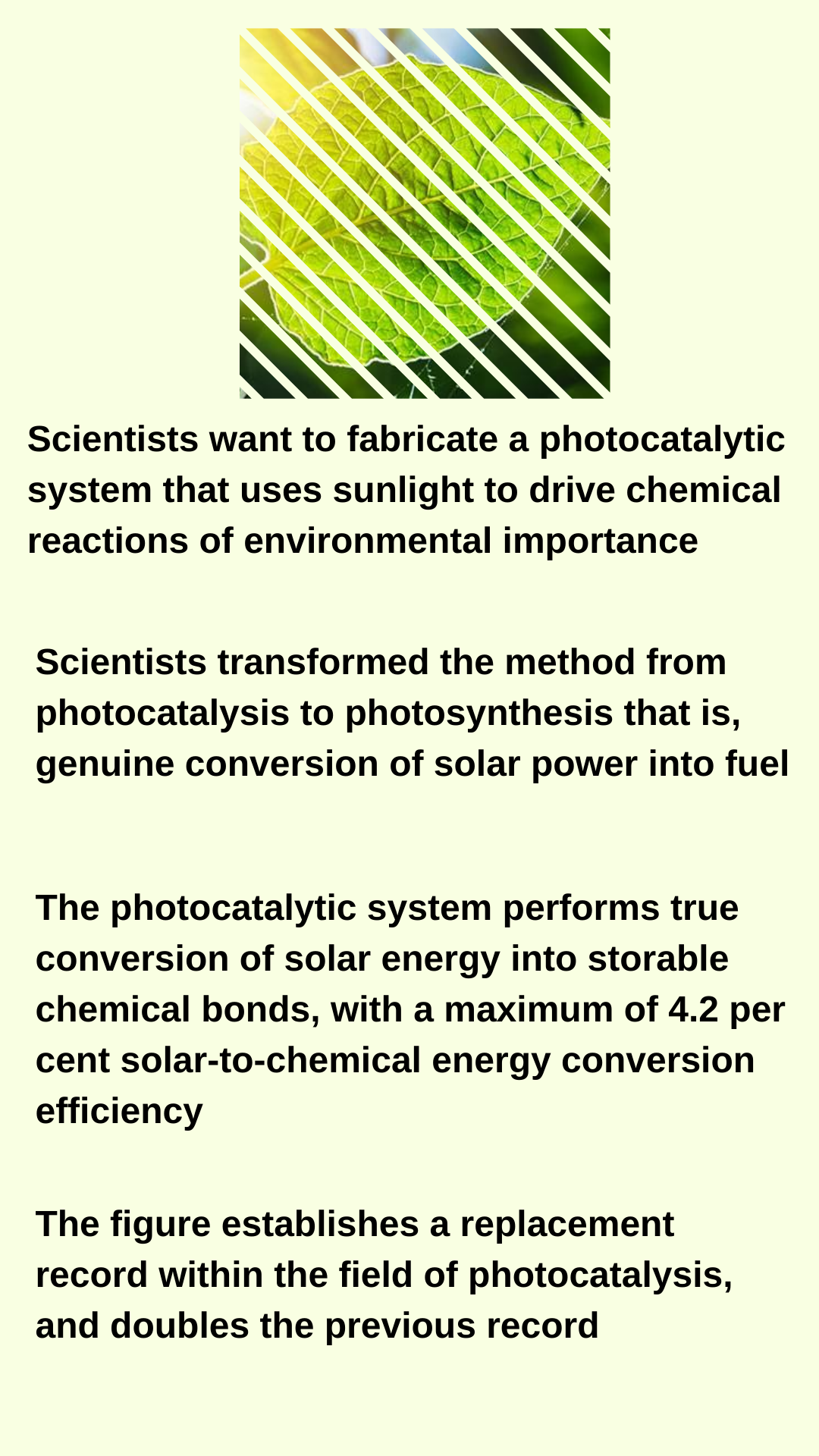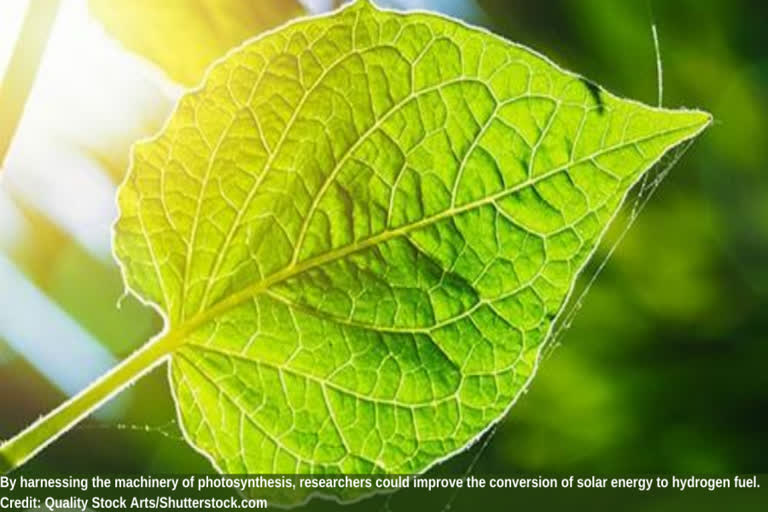Washington: Recently, scientists have achieved record efficiency for solar-to-fuel conversion, and that they want to include the machinery of photosynthesis to push it further.
The researchers will present their results at the American Chemical Society (ACS) fall 2020 via Virtual Meeting & Expo, August 20. It features quite 6,000 presentations on a good range of science topics.
Specifically, her group at the Israel Institute of Technology is designing a photocatalyst which will break down water into hydrogen fuel.
"When we place our rod-shaped nanoparticles in water and shine a light on them, they generate positive and negative electric charges," Amirav said.
Amirav further said, "The water molecules break; the negative charges produce hydrogen, and therefore the positive charges produce oxygen. The two reactions, involving the positive and negative charges, must happen simultaneously. Without taking advantage of the positive charges, the negative charges can't be routed to supply the specified hydrogen."
The positive and negative charges, which are interested in each other, manage to recombine, they cancel one another, and therefore the energy is lost. So, to make sure the charges are far enough apart, the team has built unique heterostructures comprised of a combination of different semiconductors, together with metal and metal oxide catalysts. Using a model system, they studied the reduction and oxidation reactions separately and altered the heterostructure to optimize fuel production.
In 2016, the team designed a heterostructure with a spherical cadmium-selenide quantum dot embedded within a rod-shaped piece of sulfide. A platinum metallic particle was located at the tip. The cadmium-selenide particle attracted positive charges, while negative charges accumulated on the tip.
"By adjusting the dimensions of the quantum dot and therefore the length of the rod, also as other parameters, we achieved 100 per cent conversion of sunlight to hydrogen from water reduction," Amirav said.
A single photocatalyst nanoparticle can produce 360,000 molecules of hydrogen per hour, she notes.
The group published their leads to the ACS journal Nano Letters. But in these experiments, they studied only half the reaction (the reduction). For proper function, the photocatalytic system must support both reduction and oxidation reactions. "We weren't converting solar power into fuel yet," Amirav said.
"We still needed an oxidation reaction that might continually provide electrons to the quantum dot." The water oxidation reaction occurs during a multi-step process, and as a result, remains a big challenge. Besides, its byproducts seem to compromise the stability of the semiconductor.
Together with collaborators, the group explored a replacement approach that's trying to find different compounds that would be oxidized rather than water and which led them to benzylamine. The researchers found that they might produce hydrogen from water, while simultaneously transforming benzylamine to benzaldehyde.

"The U.S. Department of Energy defined 5-10 per cent as the 'practical feasibility threshold' for generating hydrogen through photocatalysis. Hence, we are on the doorstep of economically viable solar-to-hydrogen conversion."
These impressive results have motivated the researchers to ascertain if there are other compounds with high solar-to-chemical conversions. To do so, the team is using AI. Through collaboration, the researchers are developing an algorithm to search chemical structures for an ideal fuel-producing compound. Besides, they are investigating ways to improve their photosystem, and one way might be to draw inspiration from nature. A protein complex in plant cell membranes that comprises the electrical circuitry of photosynthesis was successfully combined with nanoparticles.
Amirav says that this artificial system thus far has proven fruitful, supporting water oxidation while providing photocurrent than is 100 times larger than that produced by other similar systems.
Also Read: 'Sounds of India', AI-powered web app introduced by Google
(ETV Bharat)



